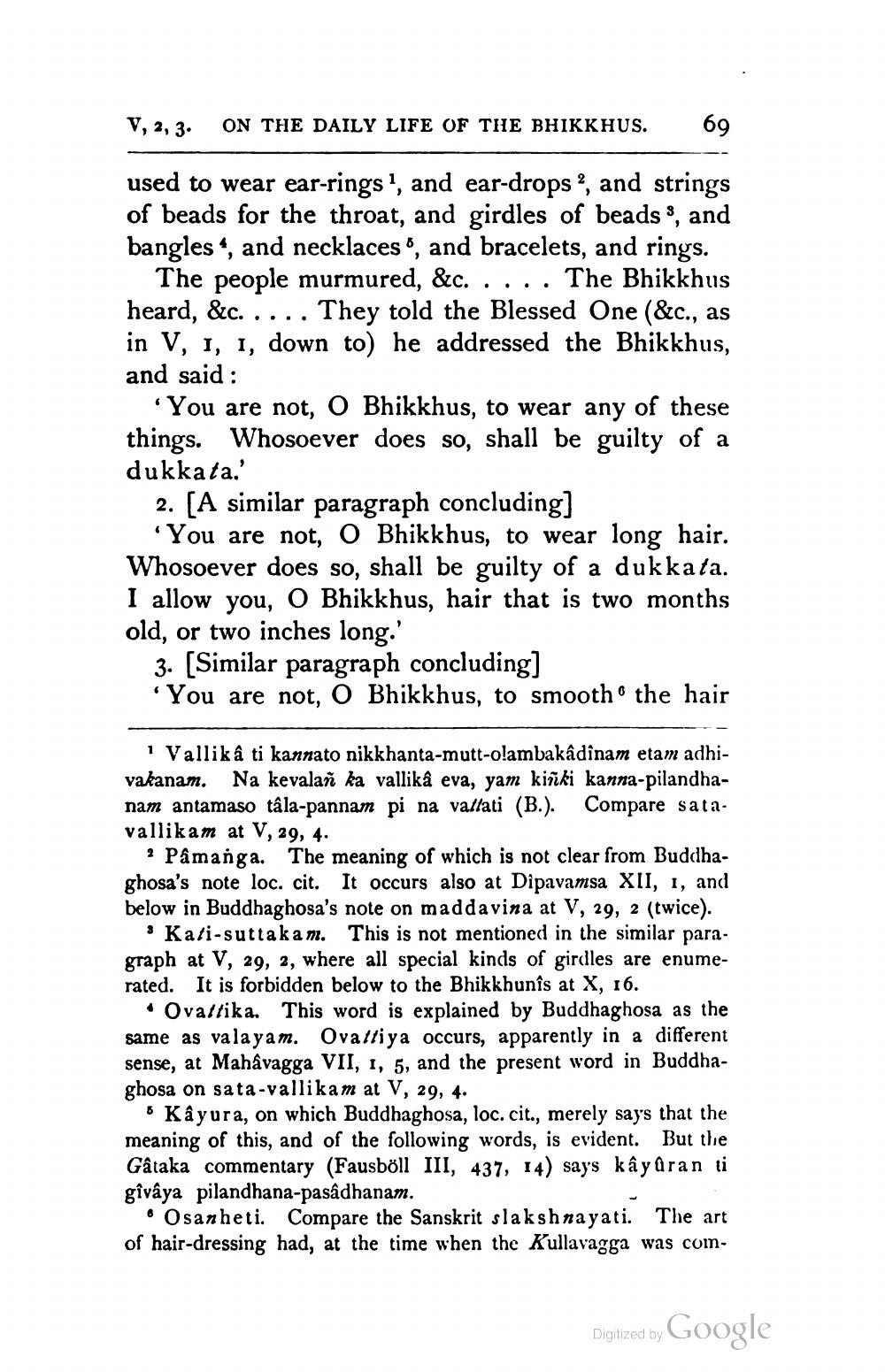________________
V, 2, 3. ON THE DAILY LIFE OF THE BHIKKHUS.
69
used to wear ear-rings', and ear-drops ?, and strings of beads for the throat, and girdles of beads, and bangles“, and necklaces ', and bracelets, and rings.
The people murmured, &c. .... The Bhikkhus heard, &c. .... They told the Blessed One (&c., as in V, 1, 1, down to) he addressed the Bhikkhus, and said :
You are not, O Bhikkhus, to wear any of these things. Whosoever does so, shall be guilty of a dukkata.'
2. (A similar paragraph concluding]
You are not, O Bhikkhus, to wear long hair. Whosoever does so, shall be guilty of a dukkata. I allow you, O Bhikkhus, hair that is two months old, or two inches long.'
3. [Similar paragraph concluding] *You are not, O Bhikkhus, to smooth the hair
1 Vallik a ti kannato nikkhanta-mutt-o!ambakâdinam etam adhivakanam. Na kevalan ka vallika eva, yam kinki kanna-pilandhanam antamaso tâla-pannam pi na valtati (B.). Compare satavallikam at V, 29, 4.
? Pamanga. The meaning of which is not clear from Buddhaghosa's note loc. cit. It occurs also at Dipavamsa XII, 1, and below in Buddhaghosa's note on maddavina at V, 29, 2 (twice).
Kali-suttakam. This is not mentioned in the similar paragraph at V, 29, 2, where all special kinds of girdles are enumerated. It is forbidden below to the Bhikkhunîs at X, 16.
• Ovaltika. This word is explained by Buddhaghosa as the same as valayam. Ova Iliya occurs, apparently in a different sense, at Mahavagga VII, 1, 5, and the present word in Buddhaghosa on sata-vallikam at V, 29, 4.
Käyura, on which Buddhaghosa, loc. cit., merely says that the meaning of this, and of the following words, is evident. But the Gâtaka commentary (Fausböll III, 437, 14) says kây Qran ti givaya pilandhana-pasadhanam.
• Osanheti. Compare the Sanskrit slakshnayati. The art of hair-dressing had, at the time when the Kullavagga was com
Digitized by Google
Digitized by




